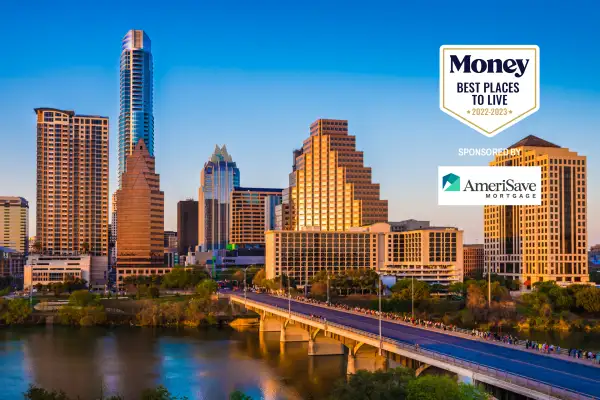The 10 Best Big Cities to Live in the U.S.

The Austin, Texas metro area gained 53,301 people between July 2020 and July 2021, according to the U.S. Census Bureau. About 25% of that was “natural increase” a.k.a. births minus deaths. The rest was migration, people moving to Austin from somewhere else — in the middle of a global pandemic no less.
The city’s BBQ joints, live music scene and access to nature certainly helped drive some of that growth. For some, the fact that Texas has no income tax was probably a draw too, while others were likely drawn to Austin’s reputation as a progressive hub in a largely conservative state.
But the undeniable linchpin to the boom? That would be abundant jobs and opportunity. That’s also why Austin claims the top spot on Money’s list of the best big cities in the U.S. for 2022.
For this list, we focused on places with populations of 600,000 or more. This cutoff gave us 29 contenders, ranging in size from New York City with over 8 million residents to Louisville, Kentucky and Memphis, Tennessee with about 630,000 each.
As with our flagship Best Places to Live, we collected approximately 350 pieces of data on each place and grouped that information into nine primary ranking categories such as cost of living, diversity and quality of life. (See our full methodology for more details.)
The most important factor for this ranking — and an area where Austin shines — was economic opportunity. This includes employment data, job growth projections and indices that track how many residents are in poverty and if they are employed in a healthy mix of different industries. It also helped that, while not cheap, the cost of living in Austin is still lower than in many other large cities.
Austin saw a 10% increase in jobs between 2016 and 2021. This was due in large part to the arrival of major tech companies like Apple, Oracle and Tesla. As a result, the unemployment rate in the Texas capital is just 3%, considerably lower than the (already historically low) national average.
Meanwhile, at $88,000, the median household income is above the national and state figures. Perhaps most enticing is the fact that Moody’s Analytics forecasts another 11.6% increase in jobs through 2026.
A lot of ink has been spilled on the downsides of Austin’s recent growth. Insane competition for homes and skyrocketing housing prices have been chief concerns. Last year, at least one home in the city sold for $850,000 above asking price despite not having any air conditioning, according to real estate publication Curbed.
The struggle is real. The median list price of a home in Austin was $558,275 last month — up 2.2% from a year ago, according to Realtor.com. But there is hope for those looking to put down roots in Austin — Realtor.com says median list prices for homes in Austin have fallen 10% since June.
The best big cities in America
To create this list, we focused on places where at least 600,000 people live. Below are the 10 best places to live for big city people.
- Austin, Texas
- Seattle, Washington
- San Diego, California
- San Jose, California
- Denver, Colorado
- Phoenix, Arizona
- Fort Worth, Texas
- Charlotte, North Carolina
- Jacksonville, Florida
- Nashville, Tennessee
More from Money:
The 50 Best Places to Live in the U.S.

